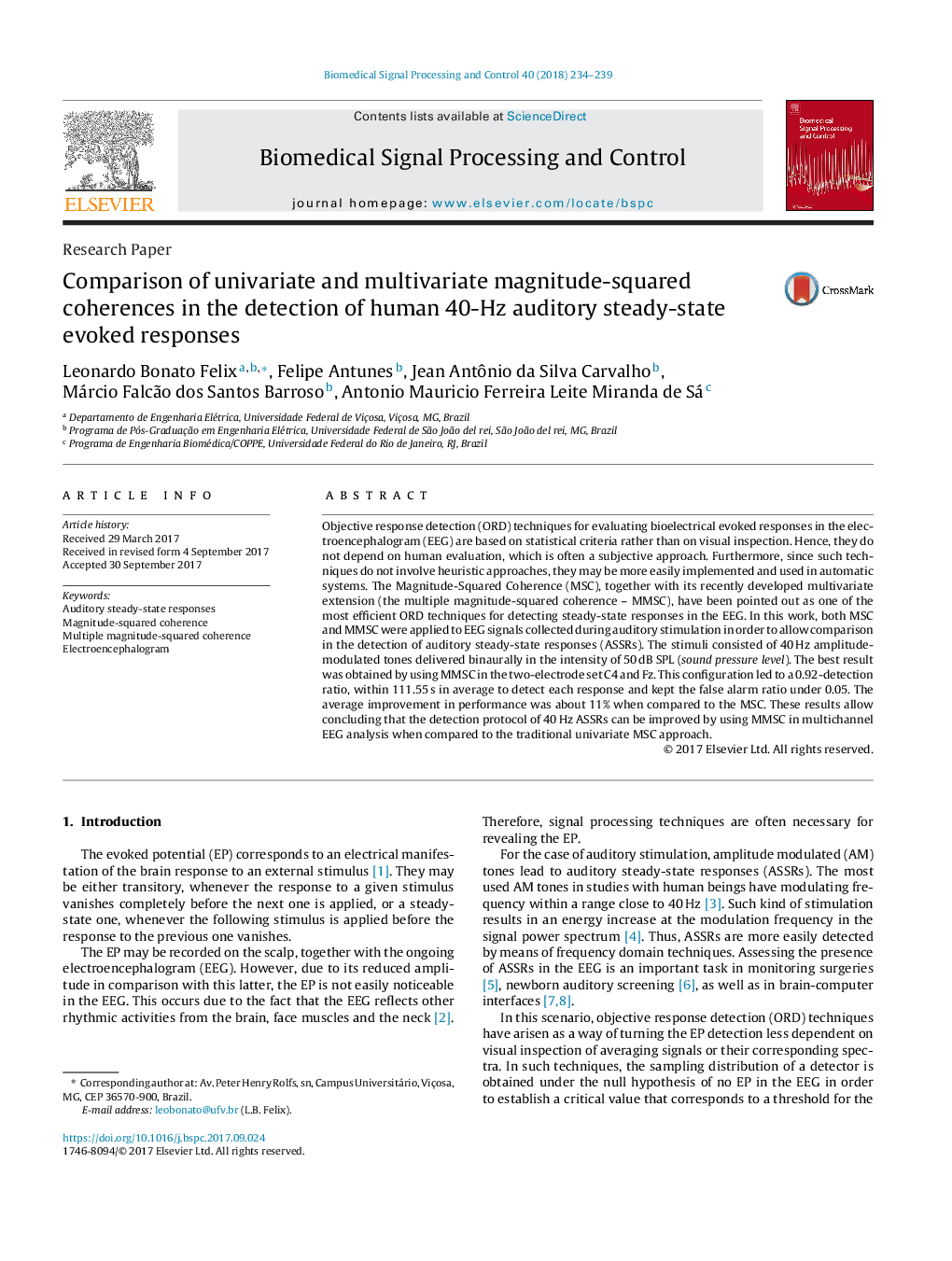| Article ID | Journal | Published Year | Pages | File Type |
|---|---|---|---|---|
| 4973396 | Biomedical Signal Processing and Control | 2018 | 6 Pages |
Abstract
Objective response detection (ORD) techniques for evaluating bioelectrical evoked responses in the electroencephalogram (EEG) are based on statistical criteria rather than on visual inspection. Hence, they do not depend on human evaluation, which is often a subjective approach. Furthermore, since such techniques do not involve heuristic approaches, they may be more easily implemented and used in automatic systems. The Magnitude-Squared Coherence (MSC), together with its recently developed multivariate extension (the multiple magnitude-squared coherence - MMSC), have been pointed out as one of the most efficient ORD techniques for detecting steady-state responses in the EEG. In this work, both MSC and MMSC were applied to EEG signals collected during auditory stimulation in order to allow comparison in the detection of auditory steady-state responses (ASSRs). The stimuli consisted of 40Â Hz amplitude-modulated tones delivered binaurally in the intensity of 50Â dB SPL (sound pressure level). The best result was obtained by using MMSC in the two-electrode set C4 and Fz. This configuration led to a 0.92-detection ratio, within 111.55Â s in average to detect each response and kept the false alarm ratio under 0.05. The average improvement in performance was about 11% when compared to the MSC. These results allow concluding that the detection protocol of 40Â Hz ASSRs can be improved by using MMSC in multichannel EEG analysis when compared to the traditional univariate MSC approach.
Related Topics
Physical Sciences and Engineering
Computer Science
Signal Processing
Authors
Leonardo Bonato Felix, Felipe Antunes, Jean Antônio da Silva Carvalho, Márcio Falcão dos Santos Barroso, Antonio Mauricio Ferreira Leite Miranda de Sá,
